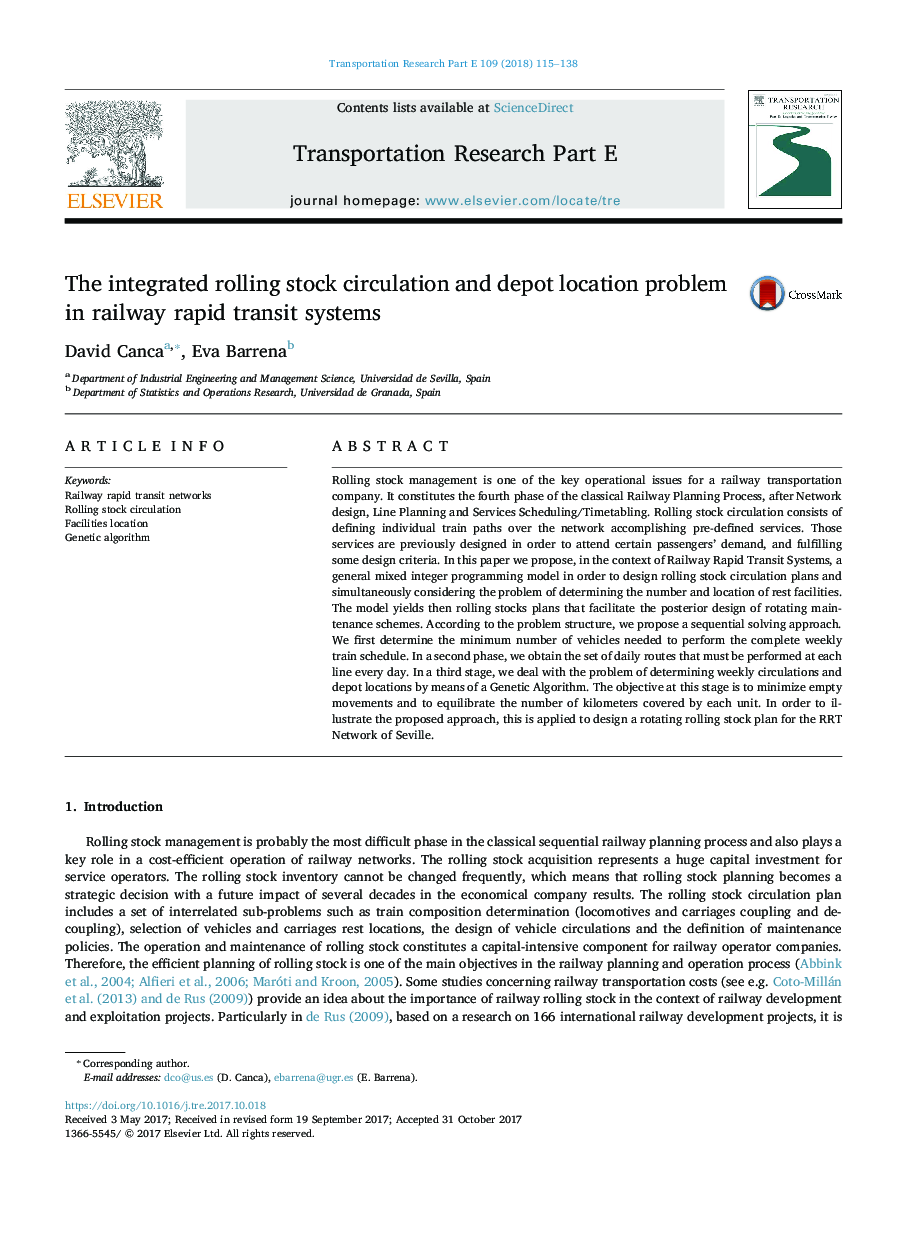| Article ID | Journal | Published Year | Pages | File Type |
|---|---|---|---|---|
| 7427953 | Transportation Research Part E: Logistics and Transportation Review | 2018 | 24 Pages |
Abstract
Rolling stock management is one of the key operational issues for a railway transportation company. It constitutes the fourth phase of the classical Railway Planning Process, after Network design, Line Planning and Services Scheduling/Timetabling. Rolling stock circulation consists of defining individual train paths over the network accomplishing pre-defined services. Those services are previously designed in order to attend certain passengers' demand, and fulfilling some design criteria. In this paper we propose, in the context of Railway Rapid Transit Systems, a general mixed integer programming model in order to design rolling stock circulation plans and simultaneously considering the problem of determining the number and location of rest facilities. The model yields then rolling stocks plans that facilitate the posterior design of rotating maintenance schemes. According to the problem structure, we propose a sequential solving approach. We first determine the minimum number of vehicles needed to perform the complete weekly train schedule. In a second phase, we obtain the set of daily routes that must be performed at each line every day. In a third stage, we deal with the problem of determining weekly circulations and depot locations by means of a Genetic Algorithm. The objective at this stage is to minimize empty movements and to equilibrate the number of kilometers covered by each unit. In order to illustrate the proposed approach, this is applied to design a rotating rolling stock plan for the RRT Network of Seville.
Keywords
Related Topics
Social Sciences and Humanities
Business, Management and Accounting
Business and International Management
Authors
David Canca, Eva Barrena,
